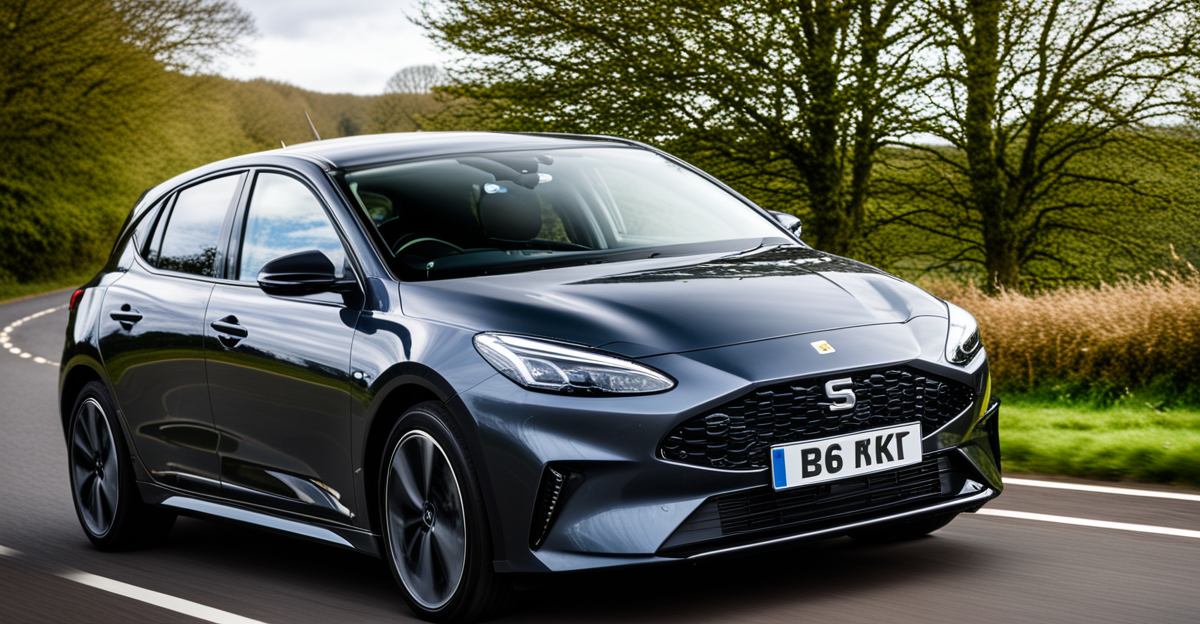Latest Safety Technologies Adopted by UK Automakers
UK automakers are spearheading advanced vehicle safety features to enhance driver and passenger protection. Modern vehicles increasingly incorporate new car safety technology, blending both active and passive systems. Active safety systems, such as automated emergency braking and adaptive cruise control, help prevent collisions by detecting hazards and responding autonomously. Passive systems, including improved airbags and energy-absorbing crash structures, minimize injury when accidents occur.
UK manufacturers utilize next-generation materials like ultra-high-strength steel and aluminium alloys, which optimize vehicle crashworthiness without adding excessive weight. These materials help create crumple zones that effectively absorb impact energy. Additionally, innovations in crash structures and reinforced passenger cells greatly enhance occupant protection during severe impacts.
This might interest you : What Are the Most Innovative Eco-Friendly Practices in the UK Automotive Industry?
By integrating these cutting-edge safety components, UK automakers are demonstrating a clear commitment to innovation. These advancements align with broader industry goals focused on reducing road accidents and increasing survivability rates. Importantly, this progress in new car safety technology reflects the UK’s dedication to both driver wellbeing and environmental sustainability, as lightweight materials also improve fuel efficiency. Such ongoing innovation ensures UK vehicles remain competitive globally in safety performance.
Regulations and Standards Shaping Safety Innovation
Understanding vehicle safety regulations UK is crucial for comprehending how safety features evolve. Recent changes mandate stricter crash test criteria and the integration of specific active and passive systems in all new vehicles. This legislative push compels manufacturers to enhance new car safety technology rapidly while maintaining compliance with stringent automotive safety standards.
In the same genre : How Has Electric Vehicle Adoption Transformed the UK Automotive Industry?
One pivotal influence is the Euro NCAP safety rating system. Automakers closely monitor these ratings, tailoring their designs to excel in tests measuring occupant protection, pedestrian safety, and collision avoidance. High Euro NCAP scores directly affect market success and drive UK automakers innovation focused on safety excellence.
Industry-wide collaboration forms another cornerstone of this progress. Manufacturers, regulators, and safety organisations work to harmonise standards and ensure emerging technologies meet unified safety benchmarks. This standardisation accelerates adoption of innovations like adaptive cruise control and automated emergency braking across the UK fleet. Pragmatically, adhering to evolving vehicle safety regulations UK not only safeguards consumers but also establishes a competitive advantage for UK automakers committed to advanced vehicle safety features.
Integration of AI and Sensor Systems in UK Vehicles
Advanced vehicle AI safety systems are transforming how UK automakers innovate in protecting drivers and passengers. These systems combine sophisticated algorithms with real-time data to enhance situational awareness and crash avoidance. At the core of this technology lies sensor-based crash avoidance, employing an integrated suite of cameras, radar, and lidar sensors. Together, these devices detect and analyse road conditions, obstacles, and other vehicles with remarkable precision.
Automated emergency braking (AEB) is a prime example of AI-powered intervention that uses data from UK car sensors to react faster than human reflexes. When an imminent collision is detected, AEB applies brakes autonomously to mitigate or prevent impact. Similarly, lane-keeping assist utilises cameras and sensors to maintain vehicle positioning and reduce lane departure accidents.
These sensor arrays continuously feed AI decision-making systems, which adapt to dynamic traffic scenarios. The evolution of sensor fusion techniques—merging lidar’s depth perception with radar’s speed accuracy and cameras’ visual data—enables UK automakers innovation in developing safer vehicles. This combination ensures robust detection capabilities even in complex environments, such as poor lighting or adverse weather.
Through these advancements in new car safety technology, UK vehicles increasingly rely on AI and sensors for proactive protection, helping to reduce accident rates and improve overall road safety.
Case Studies: Leading UK Manufacturers Advancing Vehicle Safety
UK automaker safety case studies reveal significant strides in UK automakers innovation that shape modern vehicle protection. Jaguar Land Rover, for instance, employs advanced vehicle safety features like intelligent driver aids, including adaptive cruise control integrated with terrain response systems, enhancing hazard anticipation. Their use of new car safety technology extends to occupant protection through reinforced passenger cells crafted from lightweight aluminium alloys.
MINI focuses on compact car safety by implementing state-of-the-art crash structures, combining high-strength steel with energy-absorbing zones that reduce impact forces. Their designs optimize space without compromising on protection, demonstrating purposeful UK automakers innovation in small vehicle safety.
Bentley and Aston Martin elevate safety with luxury-grade sensor systems facilitating precise vehicle AI safety systems adaptations. Features such as night vision and 360-degree camera arrays exemplify their commitment to advanced sensor-based crash avoidance technology.
Collaborations with tech firms expedite progress; these partnerships support integration of cutting-edge sensors and AI-driven systems, ensuring continual evolution of new car safety technology. Through these case studies, British car industry examples emphasize a blend of innovation, craftsmanship, and collaboration, solidifying the UK’s role as a pioneer in automotive safety advancements.
Latest Safety Technologies Adopted by UK Automakers
UK automakers lead with advanced vehicle safety features, integrating both active and passive systems for comprehensive protection. Active safety tech—such as automated emergency braking and adaptive cruise control—works proactively to avoid collisions. Passive systems focus on minimizing injury during crashes through improvements in airbags and reinforced structures.
Significantly, new car safety technology in the UK includes the adoption of next-generation materials like ultra-high-strength steel and aluminium alloys. These materials enable durable, energy-absorbing crash structures that dissipate impact forces effectively without increasing vehicle weight. Lightweight construction not only enhances crashworthiness but also improves fuel efficiency.
Moreover, UK automakers innovation extends to sophisticated crumple zones designed to absorb kinetic energy, preserving the integrity of passenger compartments. Reinforced safety cages enhance occupant protection during high-impact collisions, demonstrating a purposeful blend of structural engineering and material science.
By harmonizing these technologies, UK manufacturers push forward safety standards while maintaining performance and efficiency. This multi-faceted approach to vehicle safety exemplifies the UK automotive sector’s commitment to pioneering new car safety technology that anticipates and mitigates risks on the road.











